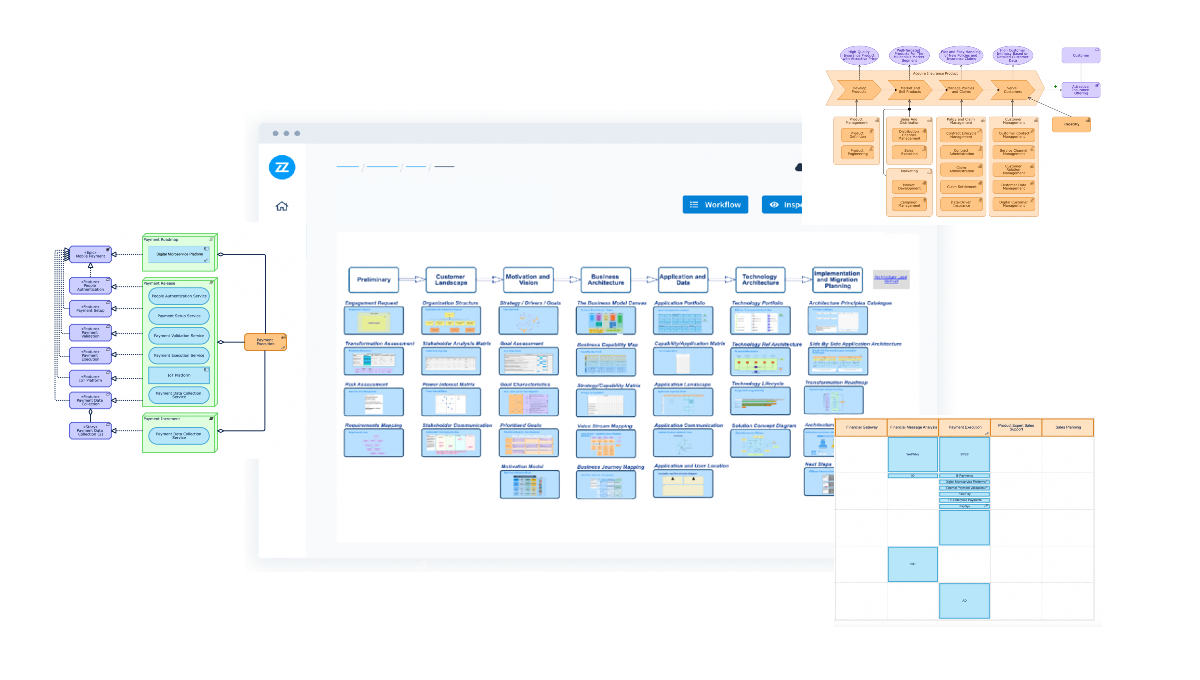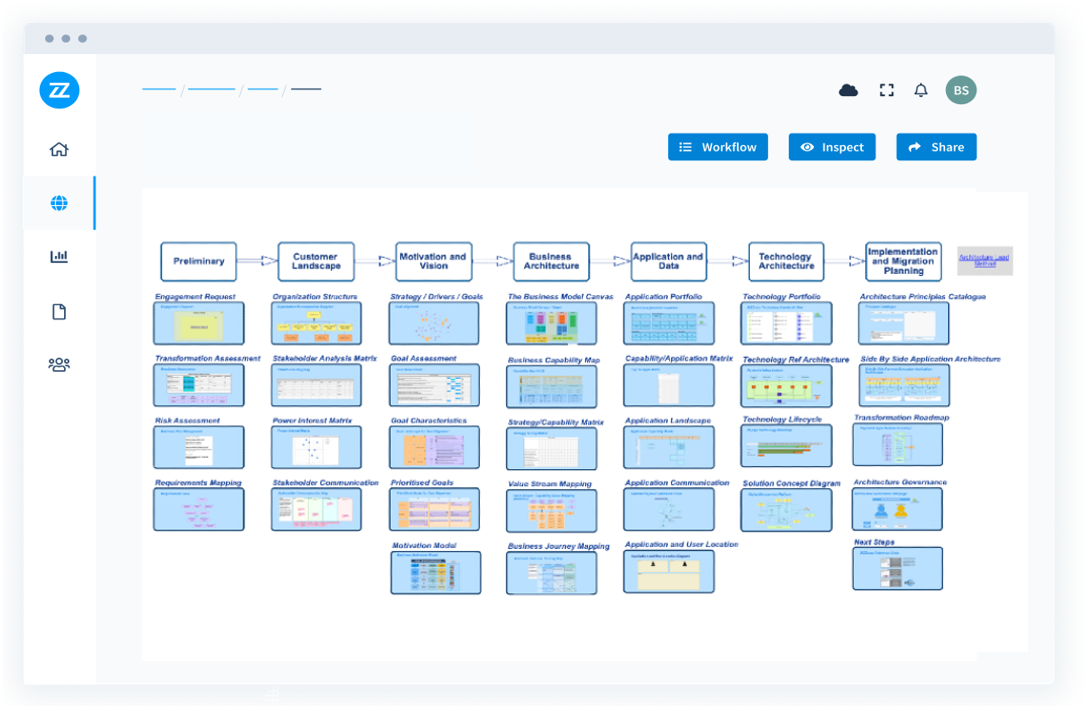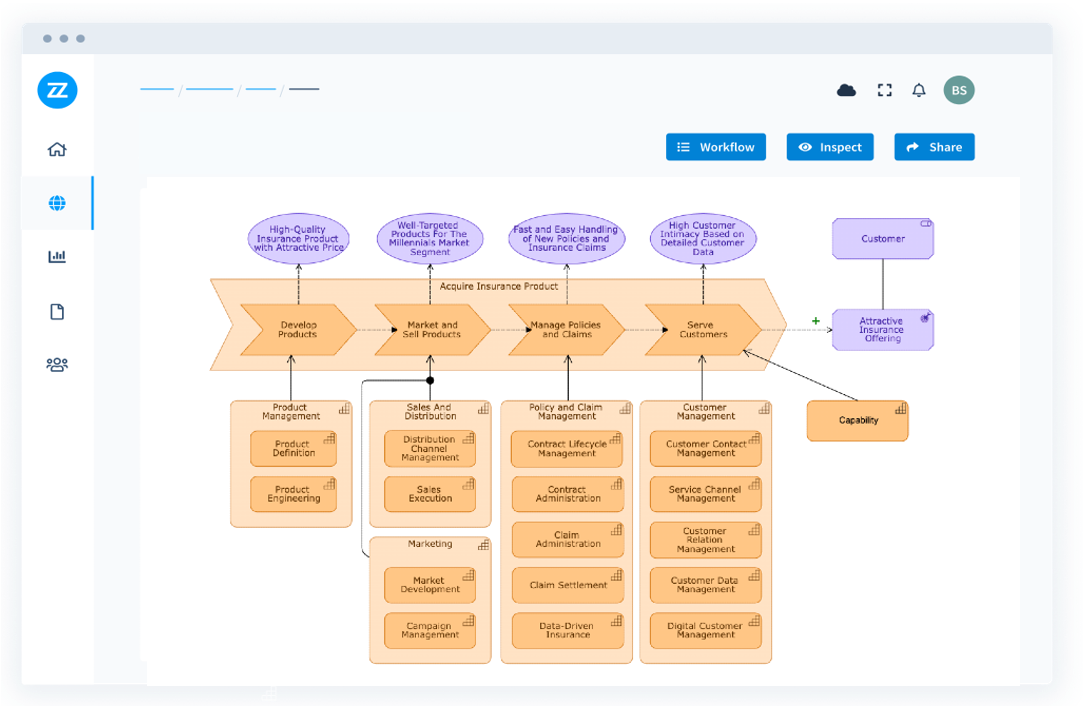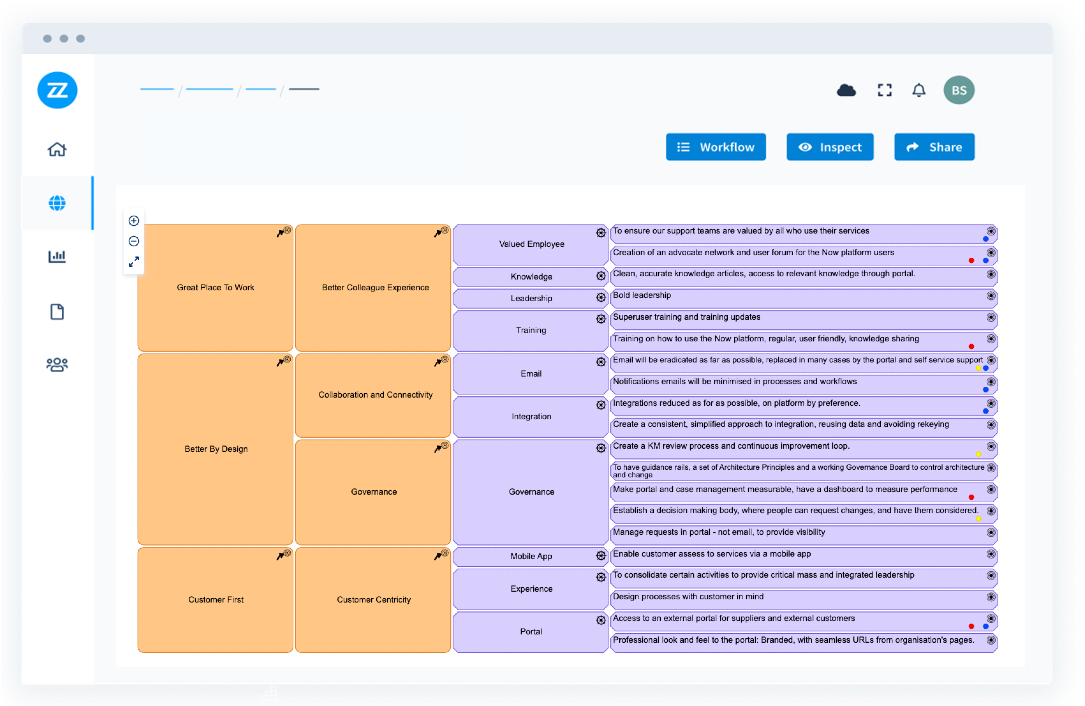Accelerate your EA practice and ensure well-architected digital transformation with our Enterprise Architecture Management solution.






Get a line of sight from motivation and strategic goals to your future state design and transformation roadmaps, by connecting the dots across stakeholders, business architecture, applications, and initiatives.
Optimize portfolios for digital transformation. Follow a guided process, create insights for key stakeholders, rationalize app landscape to save costs and drive cloud transformation.
Use ArchiMate® to capture enterprise architecture with open standards, create a central repository to catalog and connect business elements, and scale current state architecture with automation and data maintenance, which provides engaging views for non-expert stakeholders.
For informed transformation planning, create gap analysis, define the scope of key changes, and use migration scenarios to drive discussions and decisions.
Review and approve projects across architecture teams, traceable to change initiatives. Focus team(s) on high-impact deliverables based on best practices.
Identify the impact of change on your business and technology landscapes, delivering insightful roadmaps that minimize disruption and shorten time to value.
Our Enterprise Architecture Management solution provides a structured approach with built-in guidance and expertise to maximise the productivity of your EA practice. Pre-built templates drive time-to-value and ensure consistency, quality and efficiency.
Enterprise architecture (EA) management deals with the comprehensive structure and behavior of an organization, while solution architecture management focuses on designing and implementing specific solutions to business problems within that structure.
The role of an Enterprise Architect is to design and maintain the overall enterprise architecture of an organization.
Their key responsibilities include:
Using a consistent and standardized approach in Enterprise Architecture management is important because it enables better alignment between business and IT strategies, facilitates decision-making, improves communication and collaboration across teams, and ensures that architecture artifacts can be reused, shared, and maintained effectively. This approach also helps organizations to reduce complexity, minimize risks, increase agility, and optimize their investments in technology and innovation.